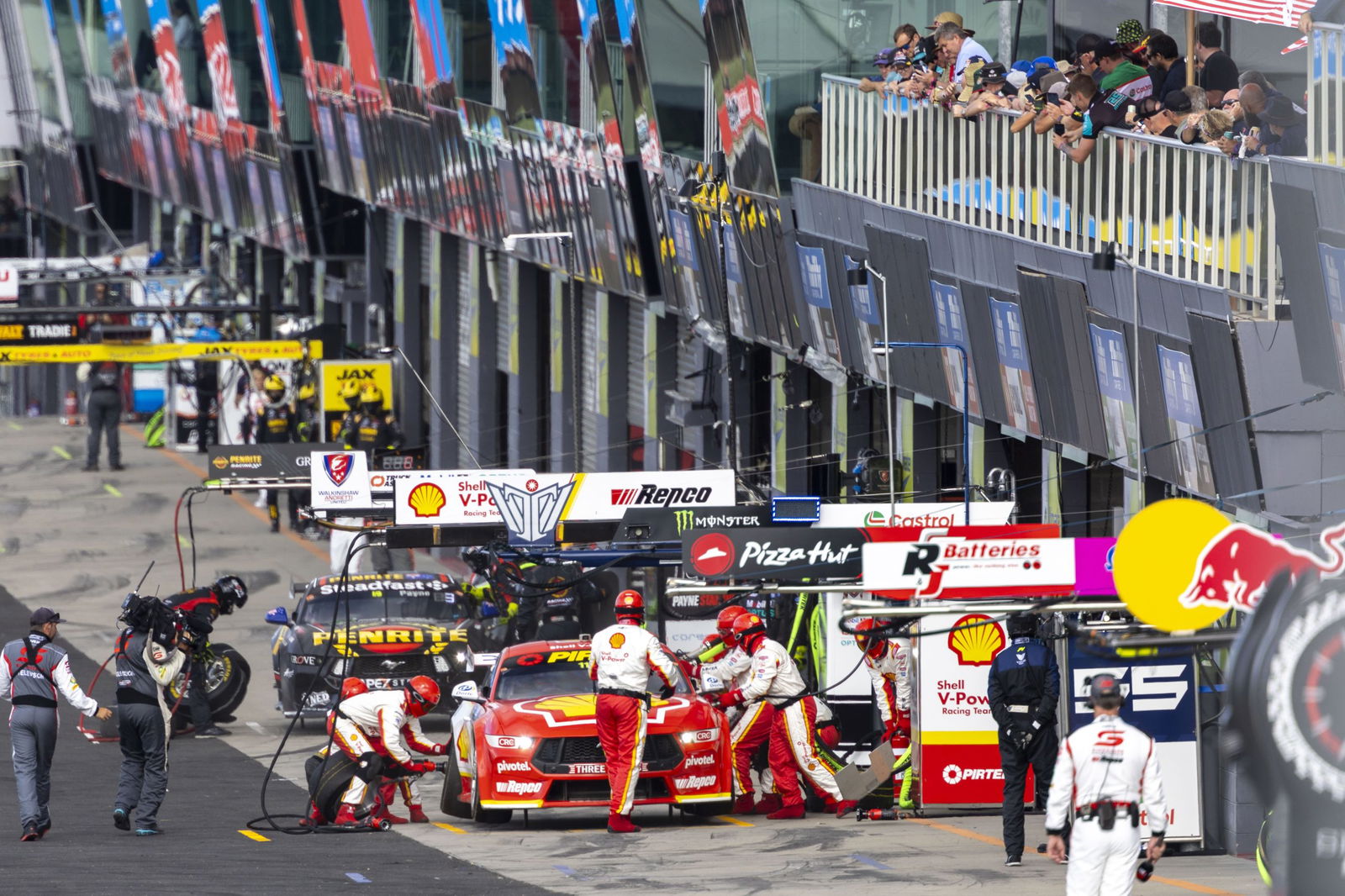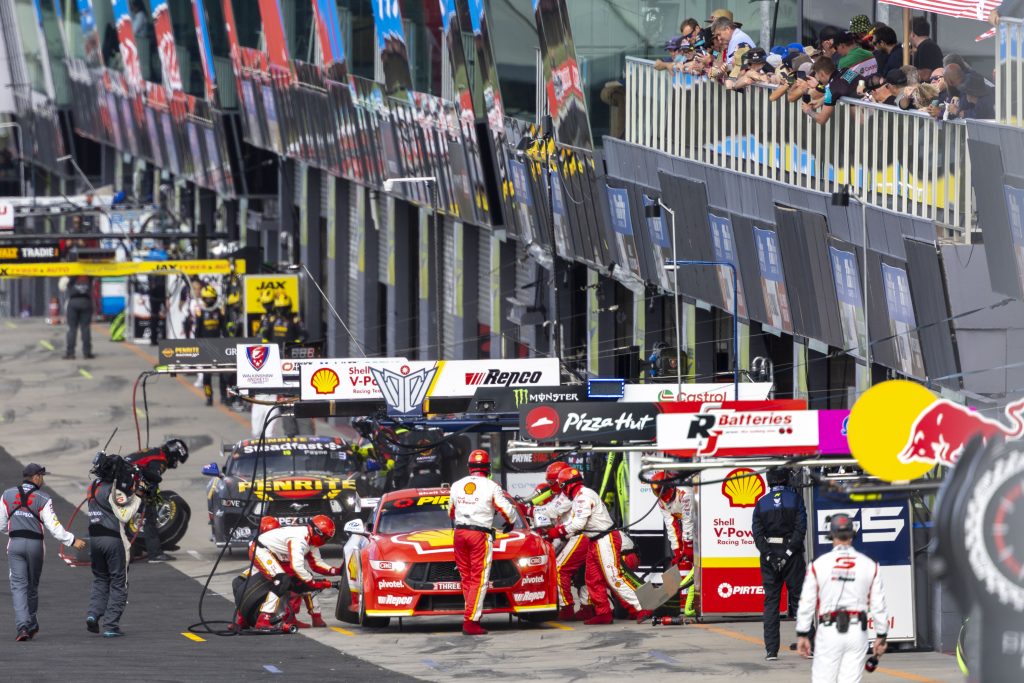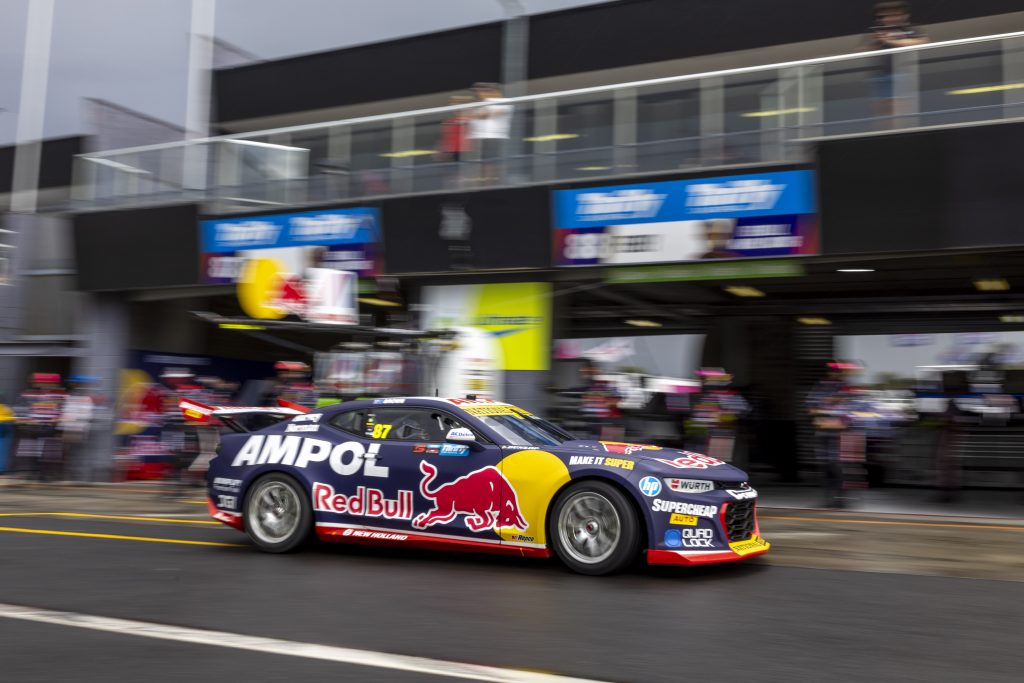

The four sprint races which were held on the Formula 1 Australian Grand Prix support bill were run without compulsory pit stops, meaning cars were only into the lane for any running repairs.
2013 Bathurst 1000 winner/2015 Supercars champion Mark Winterbottom went even further, declaring it “mega” for the show.
“When you want to pass someone, you’ve got to pass them on track, and that’s a lot different to an engineer telling you, ‘We’ll get you out early, clean air,’ just cruise around and pass 10 cars in the pits if you’re fast enough,” he observed.
“It’s all done on track.
“So, I think the non-pits, although controversial, I think it’s mega for the racing.”
Roland Dane wrote in his post-AGP Speedcafe column, “Last weekend showed that pure, unadulterated, races should play a part in the Supercars season,” citing MotoGP as an example.
Chaz Mostert, though, spoke up in favour of keeping some strategy.
While Mostert’s opinion was not drilled into any deeper at the time – and hence we should be careful to not verbal him – it is worth pausing to consider whether he and Dane are necessarily in disagreement.
The former Triple Eight Race Engineering Team Principal declared that “getting rid of compulsory pit stops at all non-fuel races needs investigating.”
However, he added, “Note, I didn’t say no pit stops, just no compulsory ones.”
Going hard and voluntarily pitting for tyres at the Melbourne SuperSprint was never going to be an optimal strategy for multiple reasons.
The races at Albert Park were relatively short – as little as 74km (14 laps), before the likelihood of time-certainty kicking in – and the pair of pit lanes is long.
Furthermore, given they did not have primary access to the secondary pit lane, Supercars teams were each only allowed to take a single rattle gun with them.
If we cast an eye to the next SuperSprint event of the season, we get to Wanneroo Raceway.
There, a pit stop in a 133km/55-lap race – and our hypothetical, CPS-free world – would definitely be worth considering (especially in the days before the most recent resurface).
In fact, that is probably the obvious strategy, but may not have been if last year’s format of a trio of 100km races rather than the pair of 133km affairs applied.
The point is, in the long run, everyone benefits from exciting racing, and less predictable racing tends to be more exciting (with the caveat that the mixed-tyre events of 2020, for example, were arguably too contrived).

But, is axing the CPS the best way of achieving that?
In the short run, maybe, but teams would quickly learn the optimal strategy and then it would take something random like a Safety Car to shake things up.
Given they are rare these days, expect the Sunday races at Wanneroo, Symmons Plains, and Hidden Valley to be less interesting than the Saturday races if there are no CPSs.
Interesting enough, though? Albert Park – ironically, for a circuit designed for Formula 1 cars rather than Supercars (now more than ever) – promoted passing but would a pit stop-free race at, say, Hidden Valley be as exciting?
Then there is the choice of tyre compound, which becomes a balancing act if one is trying to create a strategic dilemma as to whether or not to pit.
Now, let us look at the refuelling races.
Following up on his comments on sprint races, Dane wrote, “if everyone can get their heads around that, then move on to all races having zero compulsory stops.”
At Taupo, fuel economy, fuel load (ie weight), and tyre wear thus all become strategic considerations.
If that sounds familiar, one only has to look at how the 2023 Bathurst 1000 played out to learn that ‘no rules’ is not a guarantee of action-packed, thrill-a-minute racing, and hence the likelihood of reverting to the hard compound of tyre this year.
Recall also that no one took the bait when Supercars dropped the CPS requirement to one stop for the refuelling race at last year’s Sydney SuperNight.
In short, crafting a set of sporting regulations which guarantees that most races are exciting – every sport has its boring encounters – is nigh on impossible.
However, fuel drop races do reliably render the middle stint fairly stale, considering the aim of the game is to drone around in clear air and set up for the run home.
If it is indeed the case that removing the CPSs from refuelling races altogether means everyone pits only once, at least that is one less chance to, as Winterbottom put it, “just cruise around and pass 10 cars in the pits if you’re fast enough.” (Supercars has never had refuelling at Albert Park but the same philosophy applies)
Maybe, though, the unique set of circumstances thrown up by Albert Park is just the sweet spot for pit stop-free racing.
One could go on but, for now, we will restrict ourselves to four broad options, as we ask you if Supercars should axe the CPS. Cast your vote below in this week’s Pirtek Poll.


















Discussion about this post